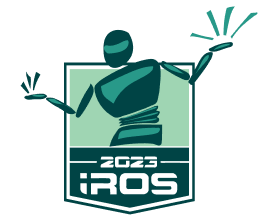RA-L Special Issue CFP: Long-Term Human Motion Prediction
Motivation
Anticipation is a key ability for advanced autonomous systems, especially if they operate in densely crowded environments and alongside humans. Examples of tasks benefiting from predictive human motion models include robot task and motion planning, automated driving, physical human-robot collaboration, intelligent video surveillance. Foreseeing how a scene involving multiple agents evolves over time and incorporating predictions in a proactive manner allows for novel ways of planning, active perception, model predictive control, or human- robot interaction. The growth of community interest to the area in recent years is evident, in particular from the publication trends in regular paper sessions of the recent robotics conferences (ICRA, IROS, RSS and others). Furthermore, the area is recognized as a major component/research direction by several big players in the automotive industry.
The proposal of this Special Issue is motivated by the success of the first workshop on “Long-term Human Motion Prediction”, which took place at ICRA 2019 in Montreal, see https://motionpredictionicra2019.github.io/. The event has received a high number of attendees (more than 100), and the audience, including renowned experts in motion prediction, has shared their positive feedback to the quality of the talks and the submitted extended abstracts.
The special issue aims to collect the several contributions presented during the workshop and to further welcome possible submissions from the interested researchers by launching a call-for-papers.
Topical Areas
Topics of interest for this special issue include and are not limited to:
- Motion trajectory prediction in 2D and 3D
- Predicting articulated human motion
- Early action and activity recognition
- Visual scene prediction
- Predictive planning and control
- Anticipation of group and crowd motion
- Human motion prediction and safety
- Human-Robot Interaction considering predictions
- Evaluation of prediction algorithms: datasets, metrics and benchmarks
- Applications of motion prediction techniques
Timeline
The special issue will follow the following timeline:
|
1 May 2020 |
Submission Deadline |
|
26 July 2020 |
Authors receive RA-L reviews and recommendation |
|
09 August 2020 |
Authors of accepted MS submit final RA-L version |
|
25 August 2020 |
Authors of R\&R MS resubmit revised MS |
|
29 September 2020 |
Authors receive final RA-L decision |
|
13 October 2020 |
Authors submit final RA-L files |
|
18 October 2020 |
Camera ready version appears in RA-L on Xplore |
|
28 October 2020 |
Final Publication |
Technical Committees Endorsements
This Special Issue proposal is endorsed by the IEEE RAS Technical Committees on: Autonomous Ground Vehicles and Intelligent Transportation Systems, Human Motion Understanding, Collaborative Automation for Flexible Manufacturing.
Format
We welcome researchers in the field to submit papers to the special issue. Submitted manuscripts should be formatted according to RA-L standards, more information can be found here.
We encourage authors to submit a video clip to complement their manuscript. Submissions will be selected based on their originality, relevance to the special issue topics, contributions, technical clarity, and presentation.







